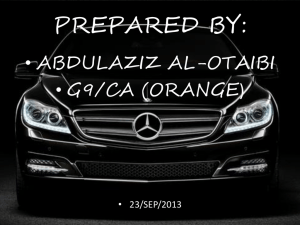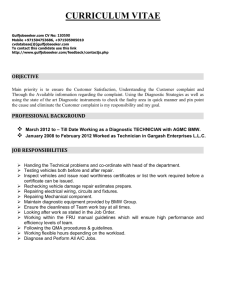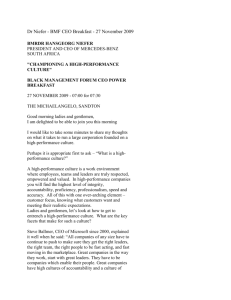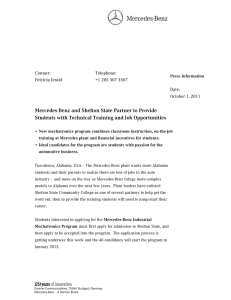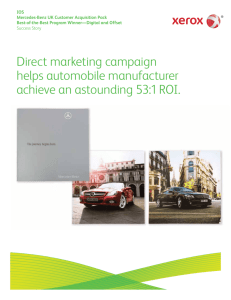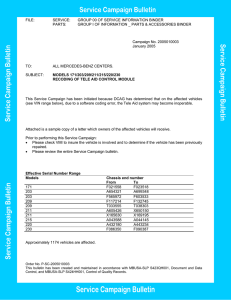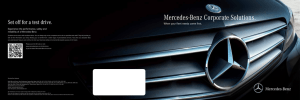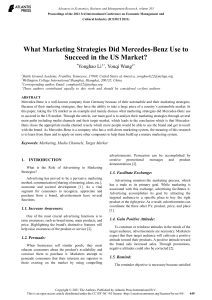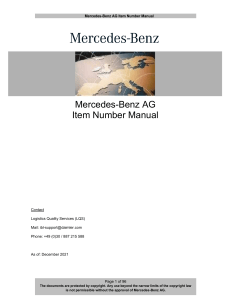Mercedes-Benz Programmatic Rich Media
advertisement
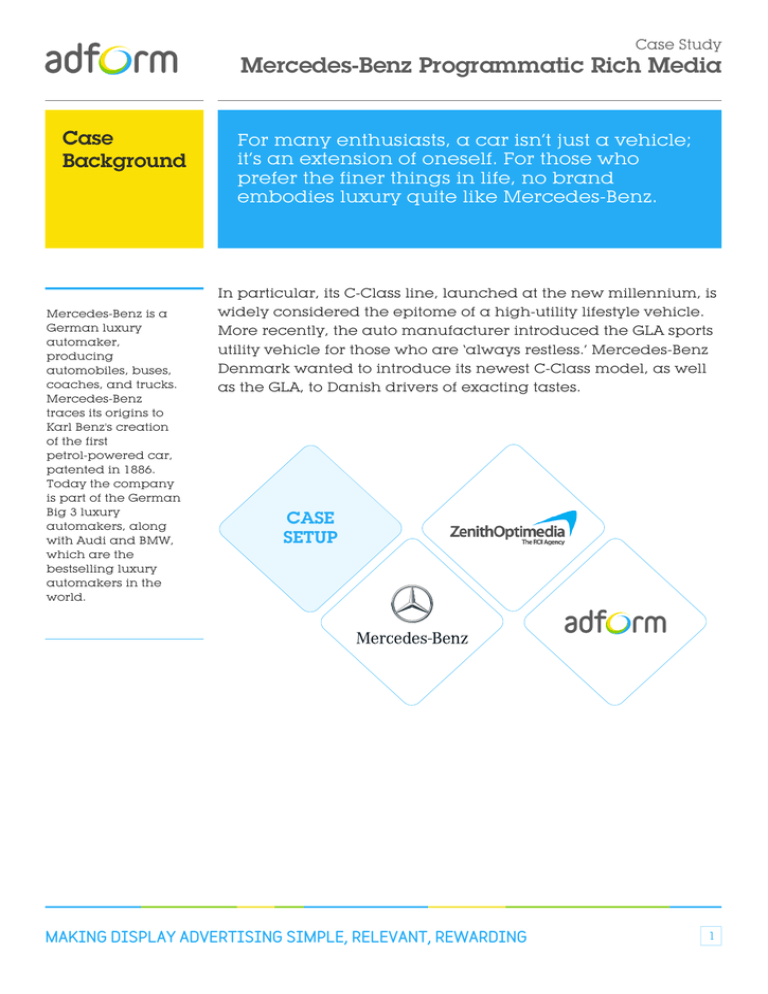
Case Study Mercedes-Benz Programmatic Rich Media Case Background Mercedes-Benz is a German luxury automaker, producing automobiles, buses, coaches, and trucks. Mercedes-Benz traces its origins to Karl Benz's creation of the first petrol-powered car, patented in 1886. Today the company is part of the German Big 3 luxury automakers, along with Audi and BMW, which are the bestselling luxury automakers in the world. For many enthusiasts, a car isn’t just a vehicle; it’s an extension of oneself. For those who prefer the finer things in life, no brand embodies luxury quite like Mercedes-Benz. In particular, its C-Class line, launched at the new millennium, is widely considered the epitome of a high-utility lifestyle vehicle. More recently, the auto manufacturer introduced the GLA sports utility vehicle for those who are ‘always restless.’ Mercedes-Benz Denmark wanted to introduce its newest C-Class model, as well as the GLA, to Danish drivers of exacting tastes. CASE SETUP MAKING DISPLAY ADVERTISING SIMPLE, RELEVANT, REWARDING 1 Case Study Mercedes-Benz Programmatic Rich Media Challenges Successfully advertising new automobiles is a game of speed. Given the competitive nature of the sector, brands have a very short window to capture the consumer’s imagination with their new models. To create a buzz for their brands, auto manufacturers invest in state-of-the-art campaigns, with creatives that dazzle consumers. Mercedes-Benz needed a campaign that could break through the Internet clutter on Denmark’s key auto-intender sites and inspire potential customers to click-through to the Mercedes-Benz website and schedule a test drive. Media efficiency is also a concern. Many consumers, curious about the newest luxuries, will click on ads for products they never intend to buy. As an upscale brand, Mercedes-Benz wanted to focus its ad spend on consumers who of means were more likely to purchase one of their models. MAKING DISPLAY ADVERTISING SIMPLE, RELEVANT, REWARDING 2 Case Study Mercedes-Benz Programmatic Rich Media The Solution From the start, ZenithOptimedia recommended a Rich Media campaign to be executed through Real Time Bidding. Adform research shows that Rich Media and video ads outperform standard banners in both performance and brand campaigns. Examining data from hundreds of campaigns each quarter, Adform found the CTR benchmark for standard banners is just 0,09%, while the benchmark CTR Rich Media and video banners is 0,27% and 0,52% respectively. Working with ZenithOptimedia, Mercedes-Benz created an overlay banner that featured a high-end video of the interiors of Class-C and GLA. The video highlighted Mercedes-Benz’s exquisite workmanship as well as the experience of being behind the wheel. To reach its target market, ZenithOptimedia turned to Adform to launch a Programmatic Rich Media campaign at scale. Using data that served as a proxy for earning power, Adform’s demand-side platform (DSP) targeted upper-income people on auto-intender and general news sites. The campaign ran for four weeks. MAKING DISPLAY ADVERTISING SIMPLE, RELEVANT, REWARDING 3 1 2 4 Case Study Mercedes-Benz Programmatic Rich Media The Results The results were nothing less than spectacular and exceeded Mercedes-Benz’s expectations in every way. The Rich Media overlay banners delivered performance that was: 2800% better CTR (%) than standard banner formats thanks to data driven targeting 5x 38x higher Engagement better Engagement Rate than Adform’s Rate than RTB for Q3 benchmark for standard formats non programmatic Rich Media MAKING DISPLAY ADVERTISING SIMPLE, RELEVANT, REWARDING 5 Case Study Mercedes-Benz Programmatic Rich Media Conclusion As the Mercedes-Benz campaign proves, for high-end brands in highly competitive industries, Programmatic Rich Media is an excellent combination to raise brand awareness and engage with new consumers. Rich Media ads drive the highest possible engagement rates; while data-driven programmatic campaigns ensure that the right types of consumers see ads. MAKING DISPLAY ADVERTISING SIMPLE, RELEVANT, REWARDING 6
